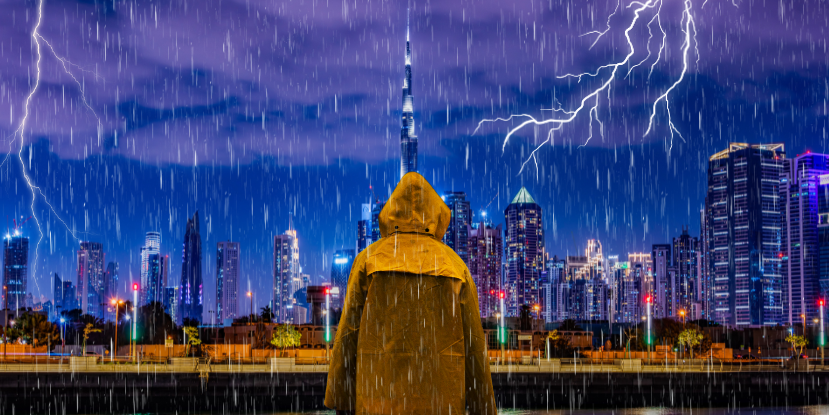As the recent storm in Dubai has subsided, it's time to assess the aftermath and take necessary steps to ensure safety and recovery. While the immediate danger may have passed, there are still important actions to take in the aftermath of such an event. Here's a guide on what to do now that the storm has passed:
1. Assess Property Damage:
Start by assessing any damage to your property caused by the storm. Check for leaks, structural damage, and other issues that may compromise safety.
Take photographs or videos of the damage for insurance purposes. Documenting the extent of the damage will be valuable when filing insurance claims.
2. Ensure Safety:
Prioritize safety as you begin cleanup and recovery efforts. Be cautious of hazards such as downed power lines, unstable structures, and standing water.
If you're unsure about the safety of your property, seek professional assistance before attempting any repairs or cleanup activities.
3. Address Immediate Needs:
Attend to any immediate needs, such as securing damaged areas to prevent further water intrusion or securing temporary shelter if your home is uninhabitable.
If your home sustained significant damage, contact your insurance provider to initiate the claims process and inquire about coverage for temporary accommodation or emergency repairs.
4. Clear Debris and Cleanup:
Begin clearing debris from your property and cleaning up any mess left behind by the storm. Dispose of debris properly and follow local regulations for waste disposal.
Use caution when handling debris, especially if it includes sharp objects or hazardous materials.
5. Restore Utilities:
Check the status of utilities such as electricity, water, and gas. If any utilities were disconnected as a safety precaution during the storm, follow proper procedures for reconnection.
If you suspect damage to utility lines or equipment, contact the relevant authorities or service providers for assistance.
6. Monitor for Secondary Hazards:
Be vigilant for secondary hazards that may arise in the aftermath of the storm, such as mold growth, insect infestations, or contaminated water.
Take steps to mitigate these hazards, such as drying out affected areas, removing water-damaged materials, and using appropriate protective equipment during cleanup.
7. Seek Assistance if Needed:
If you're unable to handle cleanup and restoration tasks on your own, don't hesitate to seek assistance from professional contractors or restoration services.
Community organizations and government agencies may also offer assistance programs for individuals affected by the storm.
8. Take Care of Yourself and Others:
Recovering from a storm can be physically and emotionally taxing. Take breaks as needed, stay hydrated, and prioritize self-care.
Check on neighbors, especially elderly or vulnerable individuals, to ensure they're safe and offer assistance if possible.
9. Plan for Future Preparedness:
Use the experience of the recent storm as an opportunity to review and improve your emergency preparedness plans. Identify any weaknesses and take steps to address them to better protect yourself and your property in future storms.
In the aftermath of the recent storm in Dubai, taking prompt and deliberate action is essential to ensure a safe and efficient recovery process. By following these steps and staying vigilant, you can navigate the aftermath of the storm and begin the process of rebuilding and restoring your home and community.


